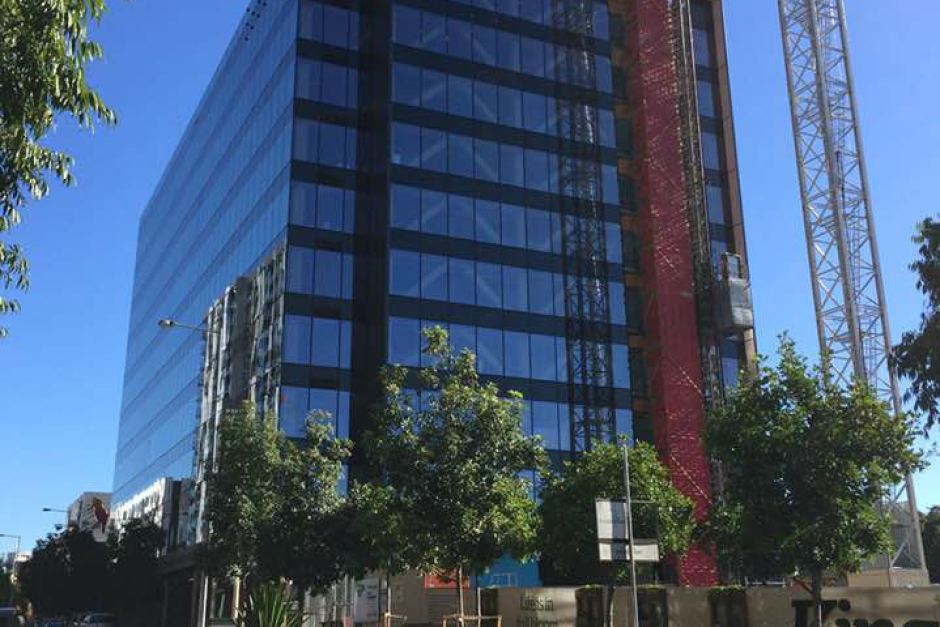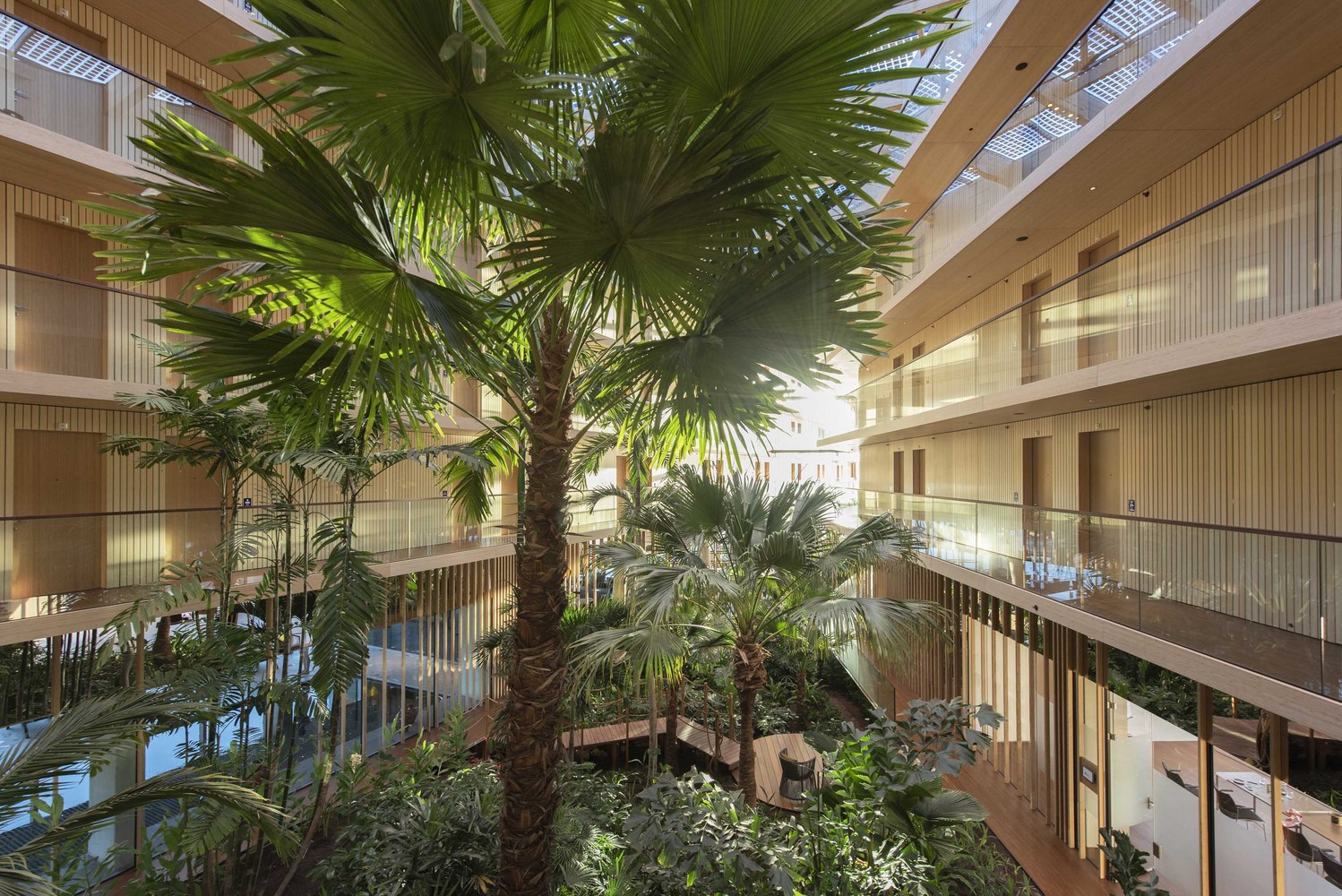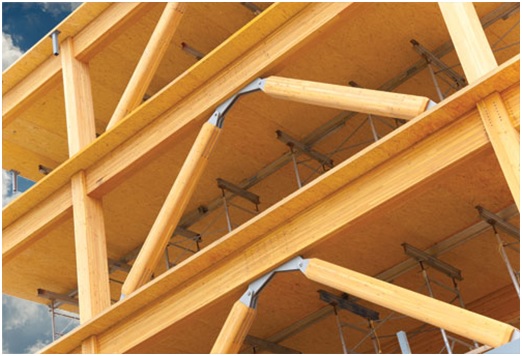
- Sustainable Planet -
- 6mins -
- 141 views
It’s ludicrious we don’t build more with wood. Here’s why we should.
BrightVibes takes a look at some of the many sound reasons to turn to wood as the preferred building material of the 21st Century.
Wood works: How trees could be some of our best allies in solving the climate crisis
Around half the world’s seven billion people are in urban areas today, and some futurists predict that by 2050, 75% of the people on earth will live and work in cities. The challenge is to find quality, affordable, and environmentally friendly housing for these billions of city dwellers. The answer may well be found in new architectural and engineering technologies that favour wood as the primary building material.

Why build with wood? How towers of timber could help tackle the climate crisis
Did you know, the US transportation industry is responsible for 28% of the country’s energy consumption, but the nation’s construction and building industry accounts for 48% of all the energy produced, as well as 45% of the greenhouse gases that are emitted into the atmosphere?
Much of this results from the fossil fuel energy required to forge steel and produce concrete, the primary building materials of the last 125 years. Manufacturing a ton of concrete releases a ton of carbon dioxide into the atmosphere.
Wood building materials on the other hand, are relatively inexpensive to grow, manufacture and replenish because wood is natural, renewable and sustainably harvested from the nation’s working forests. Moreover, contrary to most manufacturing processes, forests produce oxygen, trees sequester carbon dioxide from the environment and store carbon in harvested wood products.
Pound-for-pound, wood is as strong as steel and extremely durable. Exciting new technologies are enabling the construction of tall, modern wood buildings that are safer and cheaper to build.
Grown by the sun and nature, wood has a lower carbon footprint than other building materials such as concrete and steel.
The emergence of technologically advanced, engineered wood provides a strong, safe, affordable building product that is more sustainable, less energy intensive, and friendlier to the environment than those currently used in most buildings.
Source: TheMostNaturalResource.com

ADVANCES IN WOOD TECHNOLOGY–HEAVY TIMBER OR MASS TIMBER CONSTRUCTION
Timber is an attractive material for green building construction as it has a lower carbon footprint, uses less energy and water and is 100% renewable from sustainably managed forests. This sets timber apart from other building materials, such as concrete and steel. While all materials are important to the construction of buildings, innovation and advances in wood technology are making it possible to build tall wood buildings using solid Mass Timber Construction.
Engineered wood products, such as Cross Laminated Timber (CLT), Glued Laminated Timber (Glulam), Structural Composite Lumber (SCL) such as Laminated Veneer Lumber (LVL), Laminated Strand Lumber (LSL) and Parallel Strand Lumber (PSL) provides consistent quality and strength, changing the way buildings perform structurally, in earthquakes, and providing a predictable level of fire resistance.
Because the size of CLT panels can be up to 19½ inches thick, 18 feet wide, and 98 feet long in North America, they are used for structural systems such as walls, floors and roofs. CLT is lightweight yet very strong, and because it is prefabricated, makes it fast and easy to install, generating almost no waste. It also provides good thermal insulation, good sound insulation and good performance under fire. Wood products tend to have lower environmental impacts than concrete or steel when considering the full life cycle impacts of these building products.
Source: TheMostNaturalResource

Architect puts forward ‘The Case for Tall Wood Buildings’
Motivated by the desire to find safe, carbon-neutral and sustainable alternatives to the existing structural materials of the urban world, Michael Green, Principal at Michael Green Architecture, published a feasibility study, The Case for Tall Wood Buildings, in which he explains how mass timber offers a safe, economical, and environmentally friendly alternative for tall building structures.
The 200-page document encourages architects, engineers and designers to push the envelope of conventional thinking by demonstrating that wood is a viable material for tall and large buildings and exposing its environmental and economic benefits.
The study introduces a new construction model for tall buildings known as ‘Finding the Forest Through the Trees’ (FFTT). This structural solution utilises mass timber panels – solid panels of wood engineered for strength through laminations of different layers – to achieve a much lighter carbon footprint than the functionally equivalent concrete and steel systems.
Preconceptions of mass timber construction are acknowledged throughout the study, showing that this mass timber structures are capable of meeting fire and life safety needs while staying within cost competitive marketplace conditions.
Source: ArchDaily.com

WOOD: THE NATURAL, HUMAN WAY TO BUILD
And finally…
‘There’s one more important aspect to wood construction. Along with all the environmental and economic benefits of wood, there is a very human advantage. Unlike concrete and steel, wood is a natural, living material. It springs from the earth and it is eternally replenishable. It was mankind’s first building material and we feel an emotional and physical connection to its aesthetics and strength. From its beautiful grain and texture, to its non-polluting, carbon-storing benefits, something in our soul tells us that wood is good.’ — WHY BUILD WITH WOOD? — MostNaturalResource.com

